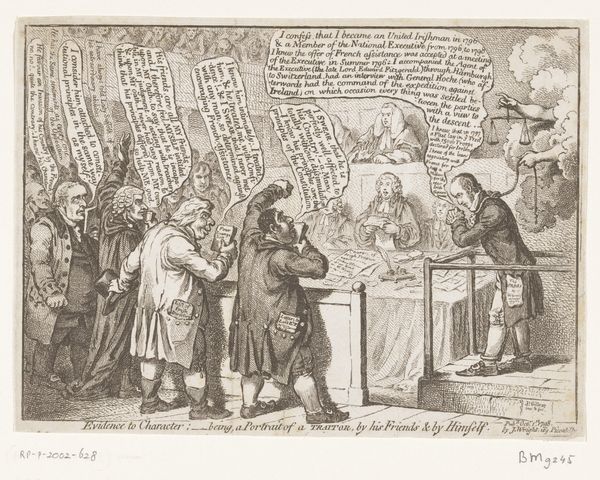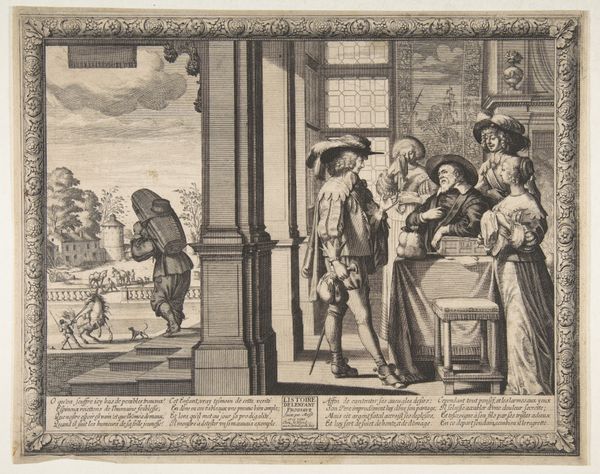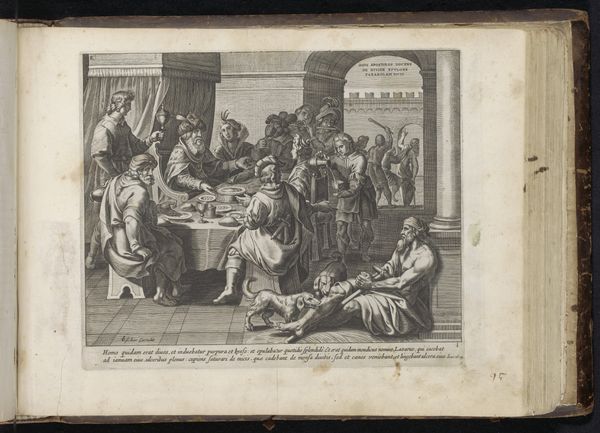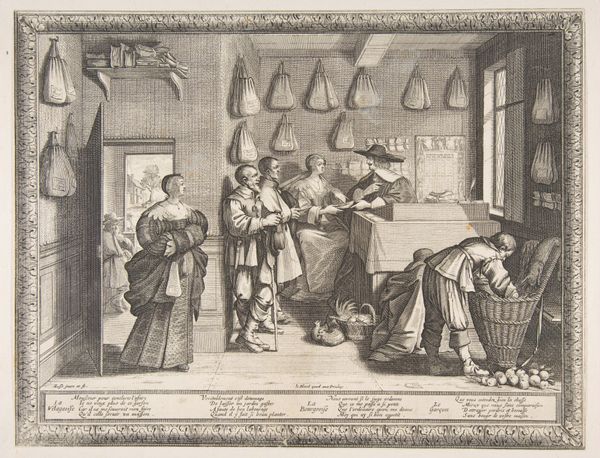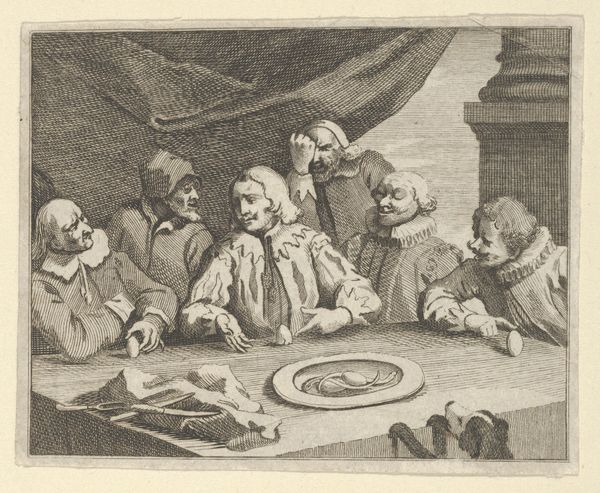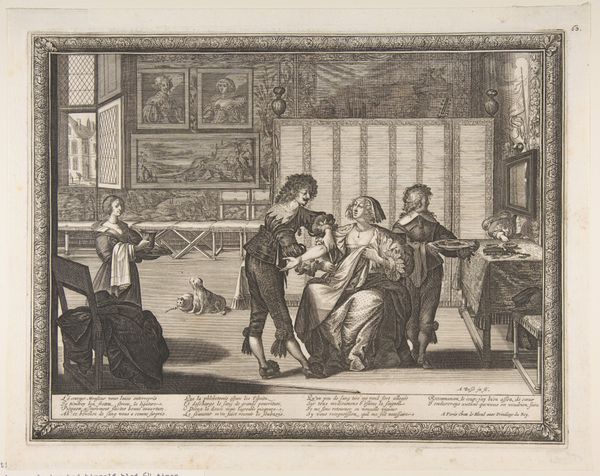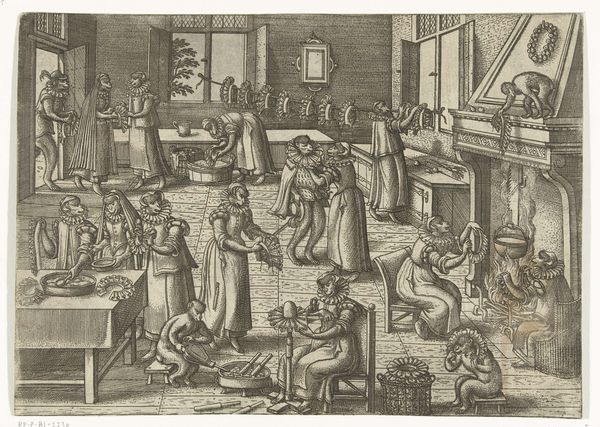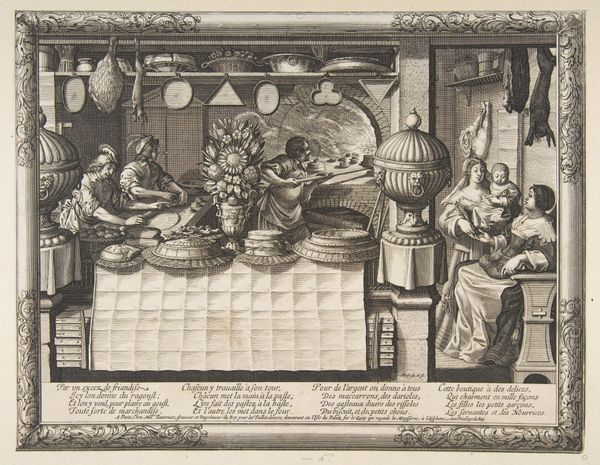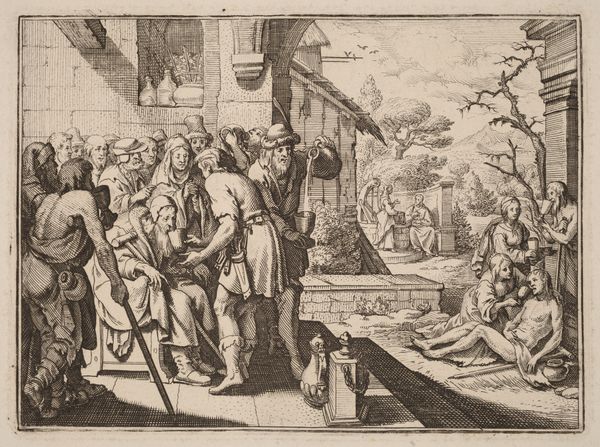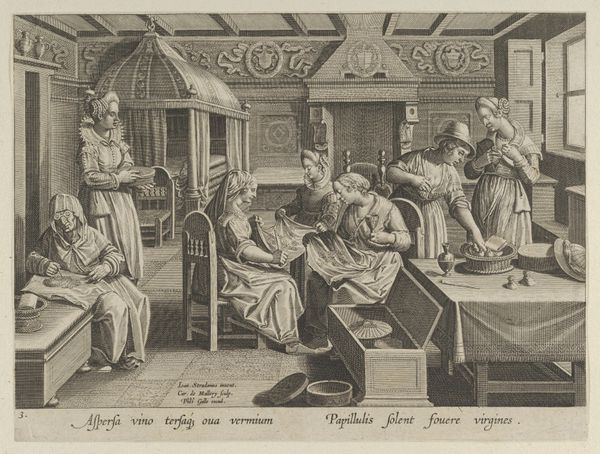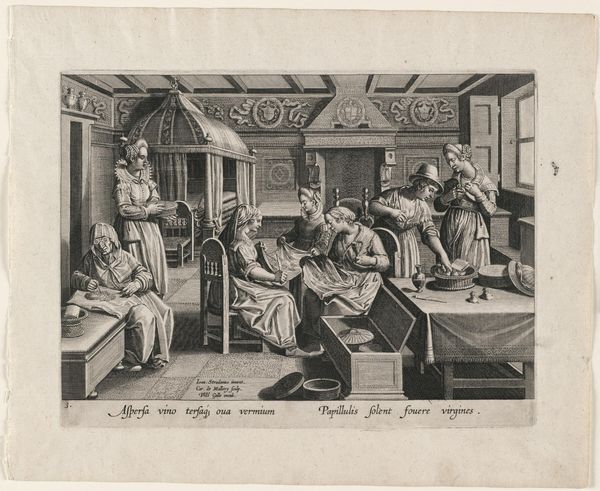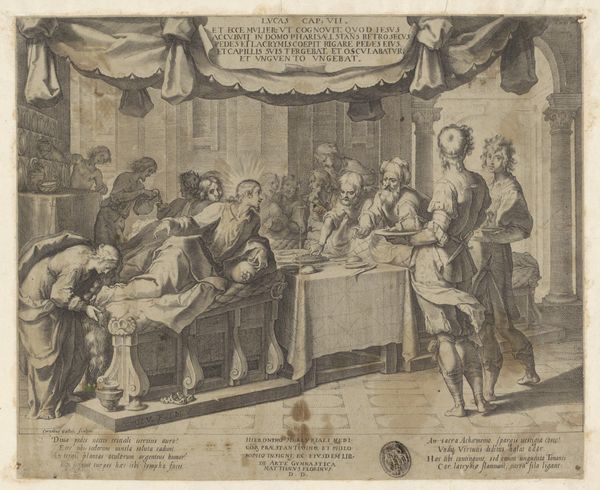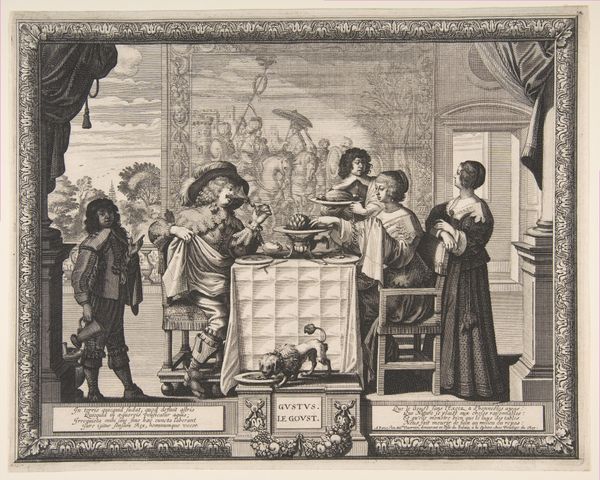
Laboratoire dans le Jardin Royale des Plantes 1645 - 1714
0:00
0:00
drawing, print, etching, engraving
#
pencil drawn
#
drawing
#
baroque
# print
#
etching
#
genre-painting
#
history-painting
#
engraving
Dimensions: sheet: 3 15/16 x 9 5/8 in. (10 x 24.5 cm)
Copyright: Public Domain
Curator: Here we have Sébastien Leclerc I's "Laboratoire dans le Jardin Royale des Plantes," a detailed etching created sometime between 1645 and 1714. Editor: It strikes me as a very busy image. It's incredibly detailed. Almost overwhelming, yet the figures seem deeply absorbed in their activities. Curator: Indeed. Leclerc has given us a glimpse into a bustling scientific environment. Etching, particularly in the Baroque period, was itself a form of scientific practice—the transfer of visual information with incredible detail, a sort of early photography. Consider the labor invested. Editor: It really shows how knowledge production wasn't some detached, solitary pursuit. This laboratory setting represents the interactions and collaborations of groups within these circles. The elitism is pretty evident, too. Just look at their clothing. These figures clearly inhabit a very specific social stratum. Curator: Absolutely. And that touches on a significant point: the role of patronage. This wasn't democratized knowledge. This would be very elite and very exclusionary at the time it was made. And think about what it takes to produce something like this in that era. Everything done by hand with precision. It involved skilled labor at every step. Editor: When we consider its function, it’s doing much more than showing the Royal Garden; it's displaying a site of scientific innovation, a place funded by royal wealth and supportive of elite male investigation. This visual reinforces power structures, right down to how even manual tasks like working the bellows are presented, relegated to the kneeling figure who's literally placed beneath them. Curator: Precisely, and that element of dissemination makes it crucial. Prints were, in essence, proto-academic journals and illustrated books, vehicles for circulating information among particular social groups. Editor: That gives me more insight into Leclerc's aims here, showing the flow and exchange of the early science that he sees happening, its patrons, and its hierarchy, for what he must believe to be for the common good. Curator: Thinking of Leclerc's place in that whole network does indeed put another slant on it all.
Comments
No comments
Be the first to comment and join the conversation on the ultimate creative platform.
